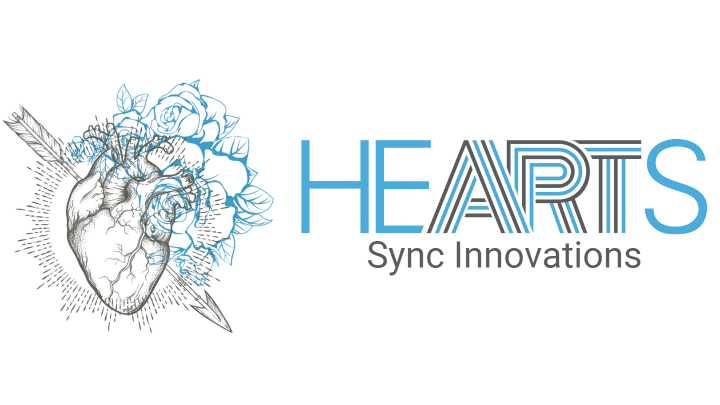As Florence Nightingale established hygiene standards during the Crimean War, she not only reduced mortality; she founded evidence-based nursing – thereby initiating a tradition that teaches: small, consistent habits can transform health systems and lives. This mindset shapes modern stress medicine. Today we know: microfine relaxation patterns – breath, music, meditation, sleep rhythm, movement – shape the autonomic nervous system and thus energy, focus, and longevity. Those who seek high performance train not only their muscles but also micro-breaks.
Stress is not an enemy, but a regulator. The decisive factor is the ability to quickly switch between activation and recovery – heart rate variability (HRV)fluctuation between heartbeats, a marker for the adaptability of the nervous system shows how well this is achieved. The parasympathetic nervous systemrelaxation nerve of the autonomic nervous system slows heart rate, lowers blood pressure, and promotes regeneration; its "levers" are breath, rhythm, and sensory input. Sleep regulationinterplay of internal clock and sleep pressure stabilizes hormones, immune function, and cognitive performance. Adaptogensplant substances that modulate stress responses and promote balance can support resilience. The goal is a personal relaxation profile: short, recurring signals that reliably switch the system to rest – without performance decline, with more clarity.
Lack of recovery has measurable costs. Irregular sleep correlates with a higher risk of obesity, metabolic syndrome, diabetes, cardiovascular diseases, and even increased mortality – in some cases more strongly than pure sleep duration alone [1]. Excessive alcohol consumption as a "shortcut to relaxation" damages the liver, heart, immune system, and brain, undermining the body’s long-term adaptability to additional stressors [2]. Physical inactivity exacerbates visceral fat deposits, blood pressure, triglycerides, and fasting glucose – a pattern that increases the cardio-metabolic burden [3]. On the positive side, targeted relaxation stimuli such as diaphragmatic breathing reduce heart and breathing rates, blood pressure, and stress hormones [4]; music and certain sound environments increase HRV and reduce anxiety, sometimes lasting for hours afterward [5] [6]. Meditation measurably increases mindfulness and resilience over weeks to months [7]. The result: better regulation of the nervous system, more stable energy, and faster recovery – core competencies for high performance.
A systematic review on diaphragmatic breathing found improvements in key stress markers in controlled intervention studies: lower heart and breathing rates, decreased salivary cortisol levels, and reduced blood pressure – clear evidence that consciously controlled exhalation activates the parasympathetic nervous system and dampens physiological stress [4]. Music interventions provide a complementary window into autonomic regulation: In patients after myocardial infarction, a 20-minute session of relaxing music lowered heart rate and anxiety more than resting alone; effects on HRV persisted for another hour [5]. In a randomized crossover study involving healthy individuals, especially slow classical music increased HRV; notably, even white noise triggered the strongest increase in HRV – likely due to monotonous, predictable auditory stimuli that promote parasympathetic activity [6]. For resilience-building training, short programs of intense mindfulness meditation show sustained gains in mindfulness and resilience even three months after the intervention – more than pure relaxation exercises, indicating specific attentional mechanisms [7]. Additionally, placebo-controlled studies with ashwagandha suggest that highly concentrated root extracts lower stress, anxiety, and serum cortisol, and improve sleep, with dose-dependent effects and good tolerability [8] [9]. Together, these findings paint a consistent picture: multisensory, rhythmic, and mindfulness-based stimuli modulate autonomic balance and build a robust relaxation response.
- Incorporate 2-3 breathing micro-sessions into your day: 5 minutes of “4-2-6 breathing” (4 seconds in, 2 hold, 6 out). Focus on the long exhalation – it triggers the parasympathetic nervous system. Ideal: right after meetings and before sleep. After 2 weeks, resting heart rate and tension are often noticeably lower [4].
- Use acoustic reset points during your lunch break: 10-15 minutes of slow classical music (60-80 bpm) or quiet white noise through headphones. The goal is a measurable increase in HRV and a reduction in heart rate; a calm environment enhances the effect [5] [6].
- Establish a daily meditation routine: 10 minutes of guided mindfulness 5-7 days a week. After 4 days, initial gains in resilience may occur; over 8-12 weeks, mindfulness and stress buffers stabilize sustainably [7].
- Consider adaptogenic support: Ashwagandha extract in standardized quality (e.g., 250-600 mg/day, effective in studies) can lower PSS scores and cortisol, and improve sleep. Check for contraindications (pregnancy, thyroid diseases, medications) with a doctor; evaluate after 8 weeks [8] [9].
- Stabilize your sleep rhythm: consistent bedtime and wake-up times (±30 minutes), at least 60 minutes without screens before sleep; blue light and cognitive input otherwise shift the internal clock and diminish sleep quality [10] [11] [1].
- Do not replace "relaxation" with alcohol: schedule alcohol-free days and link your evening relaxation to breathing or music rituals. This protects your liver, immune system, and recovery ability in the long term [2].
- Break prolonged sitting every hour for 2-3 minutes: stairs, mobility, brisk walking. Even small movement snacks reduce the unfavorable biometric effects of prolonged sitting on weight, blood pressure, and lipids [3].
High performance begins in the micro-moment: breath, sound, rhythm, presence. Implement a 10-minute protocol today consisting of breathing, music, or meditation, stabilize your sleeping times, and move hourly – the sum shapes resilience, energy, and longevity. Start now and observe how your nervous system trains itself into your best version.
This health article was created with AI support and is intended to help people access current scientific health knowledge. It contributes to the democratization of science – however, it does not replace professional medical advice and may present individual details in a simplified or slightly inaccurate manner due to AI-generated content. HEARTPORT and its affiliates assume no liability for the accuracy, completeness, or applicability of the information provided.













